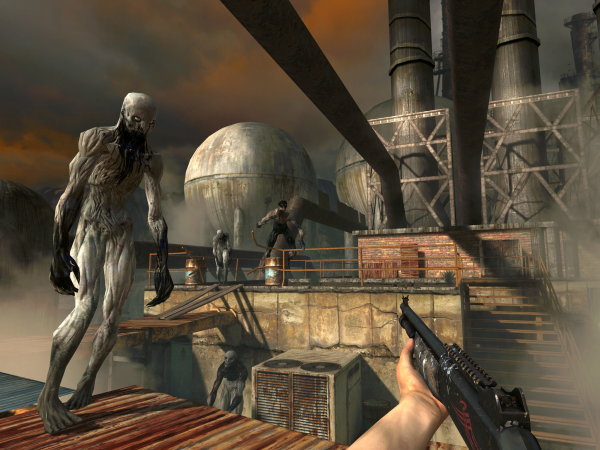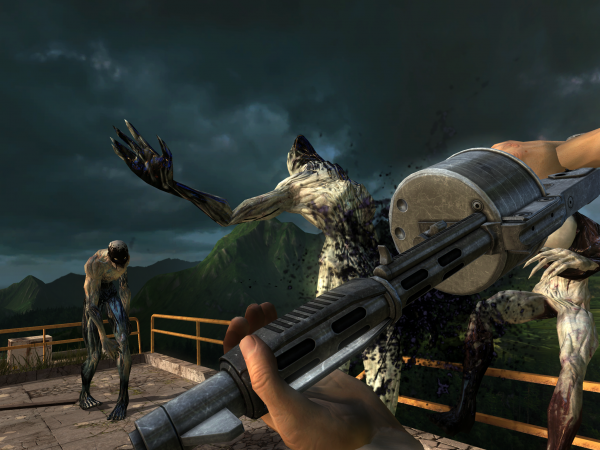DeNA and Scattered Entertainment's Isolani: Producer David Simard on the Interesting Free-to-Play First-Person Shooter Experiment



Cousins says that he’s quite proud of the way that Scattered Entertainment experimented with new control schemes. “…We were unsatisfied with the FPSes on mobile devices, and I think from our research, I think a lot of the potential audience who are really interested in the genre have a phone or a tablet, and they’re not satisfied with what they’ve got out there.” There’s two things that he thinks they have that others don’t; “The first thing that we’ve got which the competitors haven’t is a control system which is designed for touchscreens that you can play with just one hand, with just two fingers in fact on one hand, and one that really fluidly fits in with the way that we hold these devices and the usage patterns of these devices. So we’re really proud that we’ve created a control system which kind of unlocks the potential of this genre on the platform.”

“So we’ve divided the game into these discrete chunks. The gameplay feels very much like an FPS, you’re killing enemies, and it’s high action, and you’re in this 3D world, but the system we’ve created enables you to jump in and jump out in a way which a more console-style mobile-FPS doesn’t really let you do, you’ve got to wait for a save point or for a cutscene to finish or something like that.”
Interestingly, though, there’s a virtual control scheme in there as well, and Cousins justifies it by saying “If you remember back on Halo 1, you could actually opt to play that with the GoldenEye control scheme. Now the GoldenEye control scheme is very different from the Halo/Call of Duty control system. So in the same way that in that transition that Halo had to acknowledge the small numbers of players who were used to the GoldenEye style of controls, we’ve kind of done the same thing, we believe that the touch system we’ve created is the future of controlling FPSes on smart devices, but we also acknowledge that there is kind of a legacy on this platform and a certain number of people want to play with a traditional virtual stick style system.” He does believe that it’s a suboptimal way to play – and that most will switch to the ‘new’ control scheme, just as how console gamers have adapted to the scheme Halo introduced.


These little things may just make The Drowning a better experience, which players can now judge for themselves, as it is now available worldwide on the App Store.
If you're looking for a new way to play a first-person shooter with touchscreen controls, then you should probably take a look at the latest video for The Drowning.
The Drowning takes a simplified approach to the genre, having you simply tap the screen to move and shoot instead of using virtual analog sticks. The video below showcases exactly what direction the developers are taking with their new title; we're pretty excited about it, to boot.
While a few of the recent games from DeNA's US wing, formerly known as ngmoco have made a crap-ton of money, they have done little to interest core gamers. Just one example, Rage of Bahamut has kept a near constant top five residency in the top grossing list since release. That's meant millions in income, easily, for DeNA.. But for core gamers, it's been a bit... boring.
Well that's about to change. Ben Cousins has reveled the first game from the new DeNA Swedish studio, now known as Scattered Entertainment. The Drowning is a free to play first person shooter, rethought for the touch screen, and looking damn sexy.
The story is that mysterious underworld creatures have forced their way to the surface through a massive, global, catastrophic event. Unexplained oil spills have caused any creature that touches the oil to turn into a lifeless zombie bird-influenced creature.
As you work your what through this world, assumedly to safety, you craft weapons, trade supplies, and fight off countless of these bird-like creatures.
While the graphics look great, the story is interesting, and the anticipation for this game is huge, the really interesting part of this new game are the innovative controls that DeNA has come up with. While this is all possible to change before release, here's what we know so far.
One of the main interface design goals is to be able to play with just two fingers. Using one finger or two, with gestures, you can aim, move, shoot, change weapons, and everything else you need to do in an FPS.
The main control element is the two finger aim/fire. The weapon will fire at the middle point between your two fingers. Stretching you two fingers will zoom, as we would expect. A single finger touch will mark a point in the world and your player will move there. It's innovative, you have to give it that. Virtual sticks just don't work that great, and this looks, at least in the demo, to be viable. It will take hours of gameplay to verify that, and I'm looking forward to it.
The Drowning is still a ways off. We can expect it in early 2013. Hopefully we'll get more info in the coming weeks. It's certainly one to watch.
[gallery]